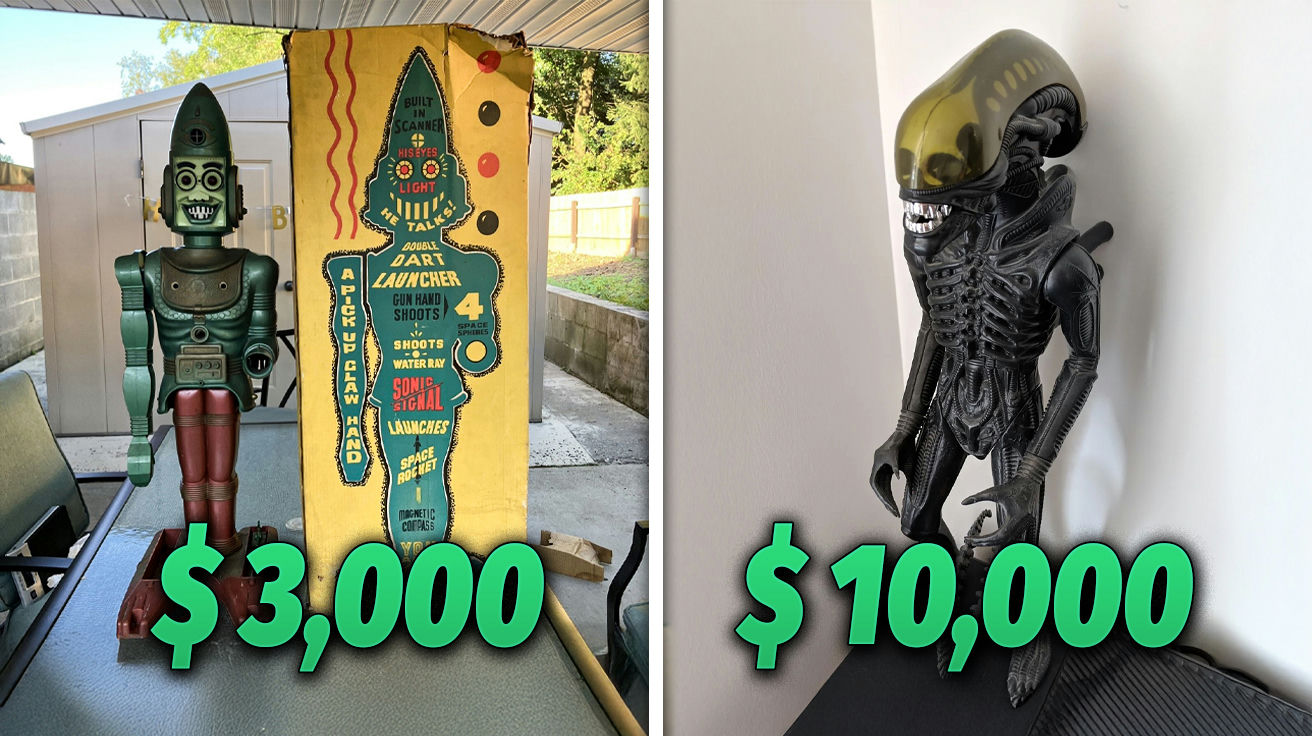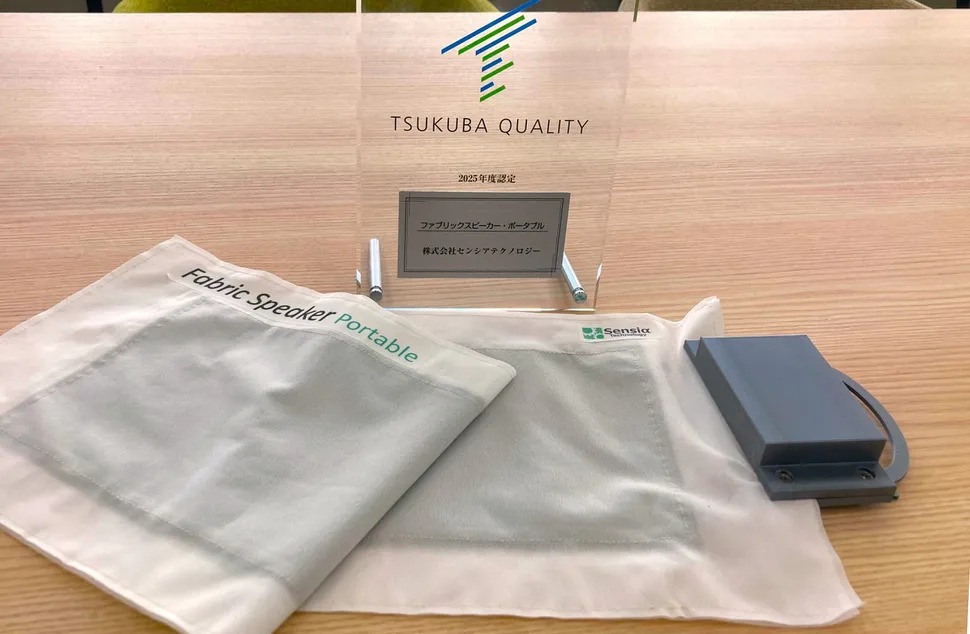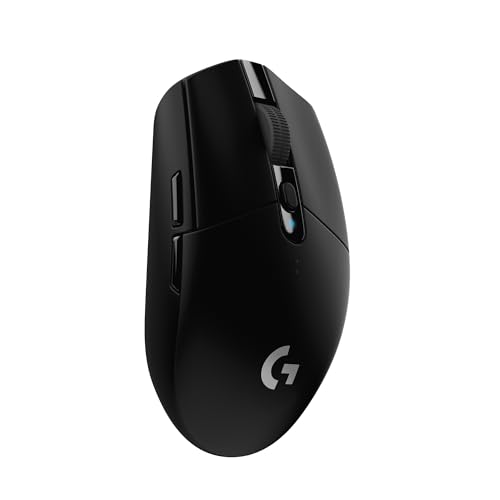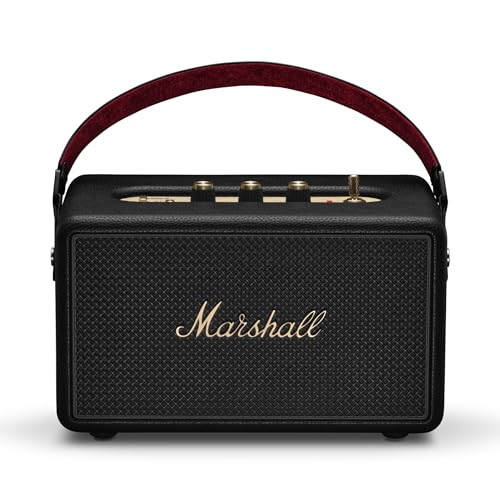While modern parents worry about screen time, the plastic wonders of the 1960s and 70s tell a different story. One where corporate creativity sparked imagination. These decades gave kids toys that would give today’s helicopter parents collective heart attacks. Heat chambers? Blood pumps? Missile launchers for kids? Yes, all real.
Behind these plastic relics hides an untold history of cultural engineering. These weren’t just playthings but calculated products of Cold War fears, space race fever, and TV’s growing grip. Simple toys carried programming while testing safety limits no modern toy could pass. These forgotten gems once ruled playgrounds and now fetch top dollar from collectors.
14. Mattel Gregory Bat with Blood Pump
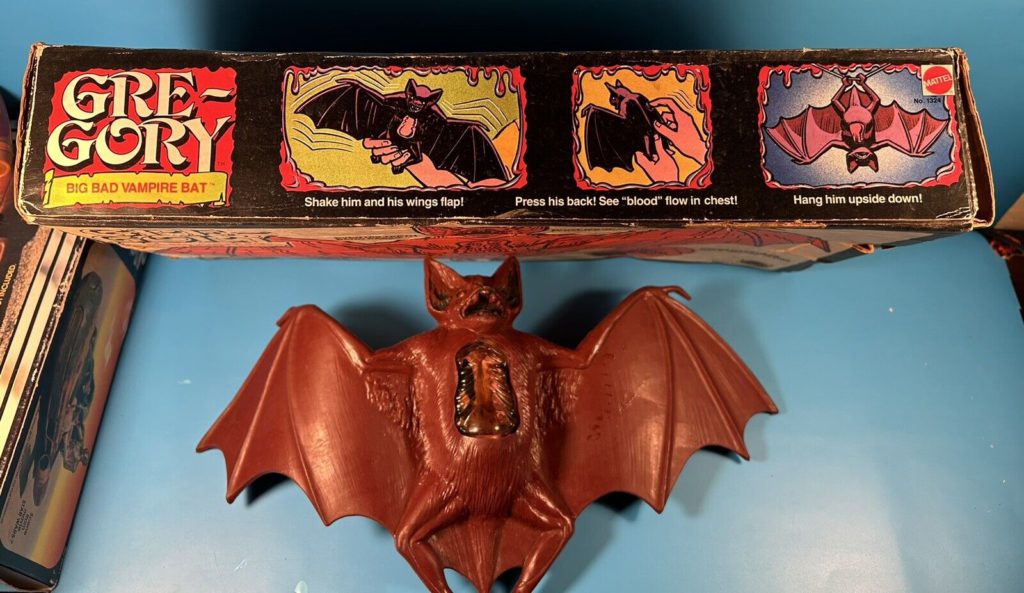
The 1976 Gregory Bat ranks as the strangest toy ever approved – a blood-simulating nightmare that would trigger instant recalls today. Our research shows no clear reason for its approval. The company, caught in temporary madness, produced a bat with tubes that pumped red liquid, making it the poster child for zero regulation in toy design.
This horror-movie prop with glowing eyes shocked children in ways unthinkable now – like finding a flip phone at an Apple Store. Today’s parents would faint seeing kids play with fake blood systems. The rubber parts break down over time, making fewer than 5% still work. Working examples sell for $300-900 to adults trying to recapture childhood risks that modern toys can’t provide.
13. Zeroids Robots
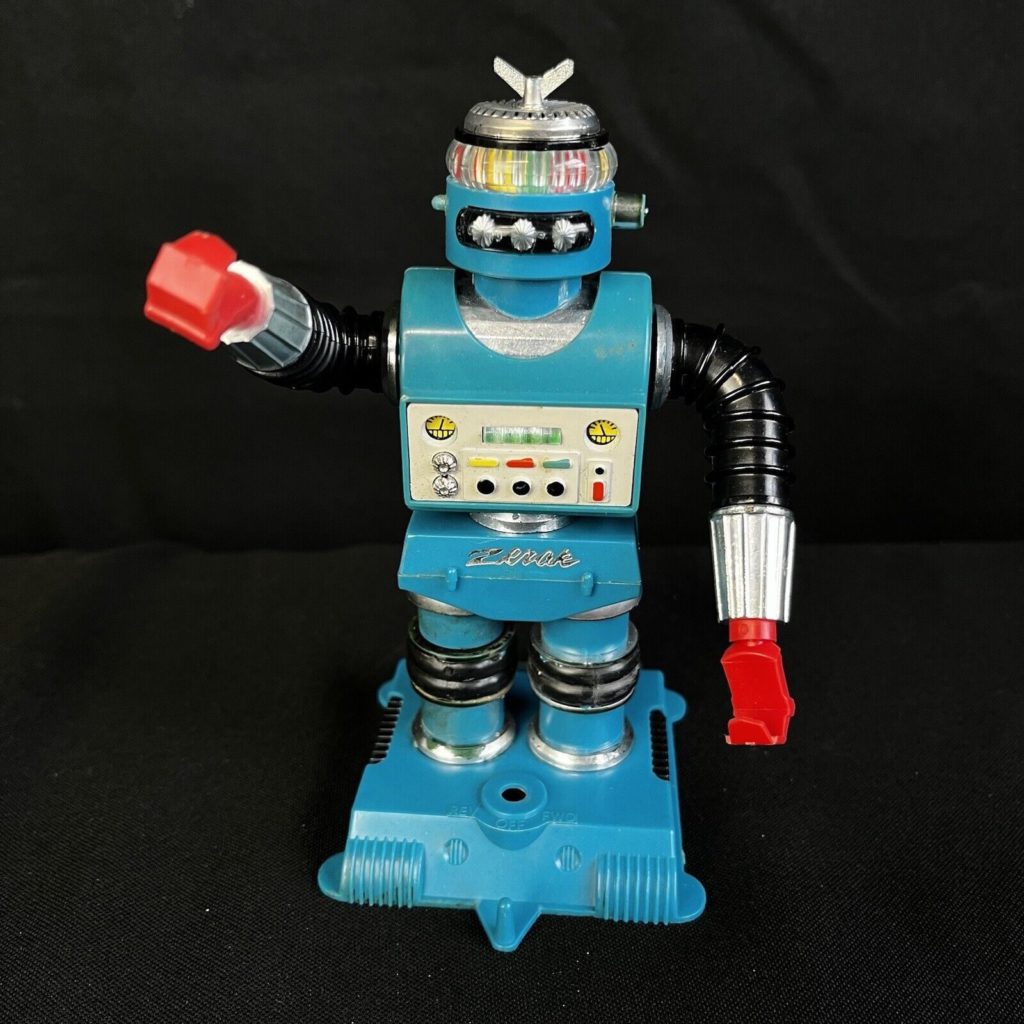
The battery-powered robots Ideal released in 1967 weren’t just toys but a response to fears about American technological competitiveness. Company records show they targeted education-focused parents long before STEM became a buzzword. These see-through robots offered hands-on learning disguised as fun for kids across America.
The tech features impressed even adults – battery power, grabbing arms, and wheels that conquered living room terrain like tiny Mars rovers. They’re basically TikTok’s viral learning robots minus the apps. Clear domes showed off gears and circuits, teaching machine basics when most tech remained mysterious. The bright colors matched the optimistic futurism of the space race era. Collectors now face an irony – the educational wear-out drives prices to $150-1,000 for working models.
12. Captain Action

Before Disney bought everything, the 1966 Captain Action toy showed a more diverse media world through its costume-changing powers. This figure wasn’t just a doll but proof of fractured intellectual property across many companies. Each costume – Superman to Spider-Man – came from separate deals when comic characters weren’t yet worth billions.
Former toy executives told us the design broke new ground – one base figure transformed by fabric outfits with tiny working zippers. The business side was even more complex. Kids played with physical proof of cross-company licensing deals, something as unlikely today as TikTok and Instagram joining forces. This relic from a less monopolized entertainment world sells for $500-2,000+ to collectors, many working for companies that now make such partnerships impossible.
11. Outer Spacemen
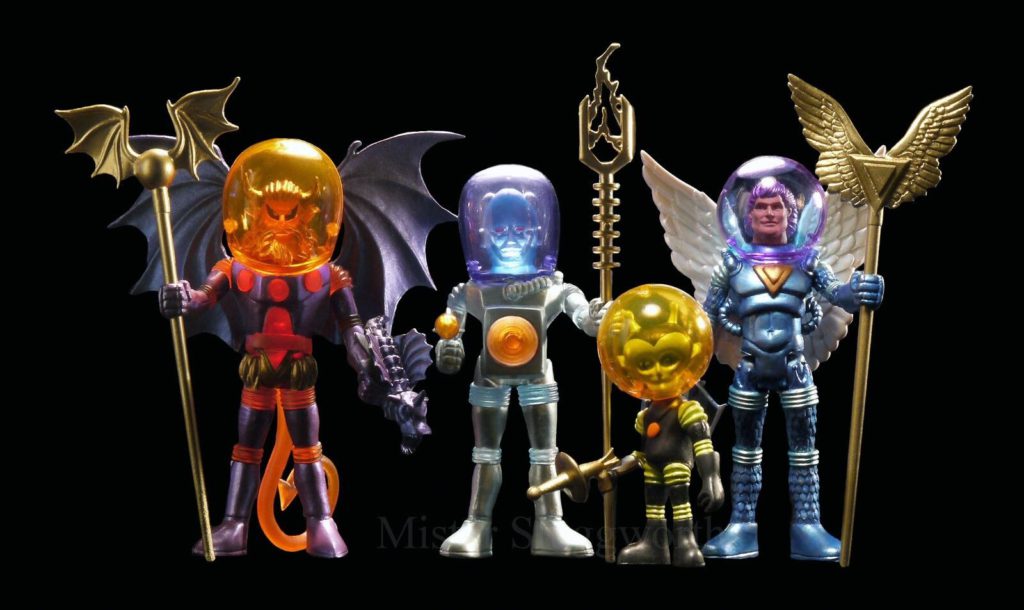
While Star Trek showed a military-style space future, Colorforms’ 1968 Outer Spacemen offered kids something truly different – aliens so strange they weren’t even human-shaped. Former designers confirm they had a counter-cultural mission – these figures directly challenged the uniform space vision dominating kids’ TV. They were the Billie Eilish of the toy shelf, refusing conventional norms.The weird designs – like the octopus-inspired Astrona – pushed kids to think beyond the human-like aliens on TV and in movies.
Company memos prove they deliberately stretched what “alien” could mean. Each figure came with unique weapons and tools, expanding play beyond Earth-centered stories. The rubber breaks down over decades, creating scarcity with prices at $120-350 per figure and complete sets reaching $800-1,500. The decay pattern mirrors forgotten alternatives as mainstream stories focused on conventional heroes.
10. Kenner $6 Million Man
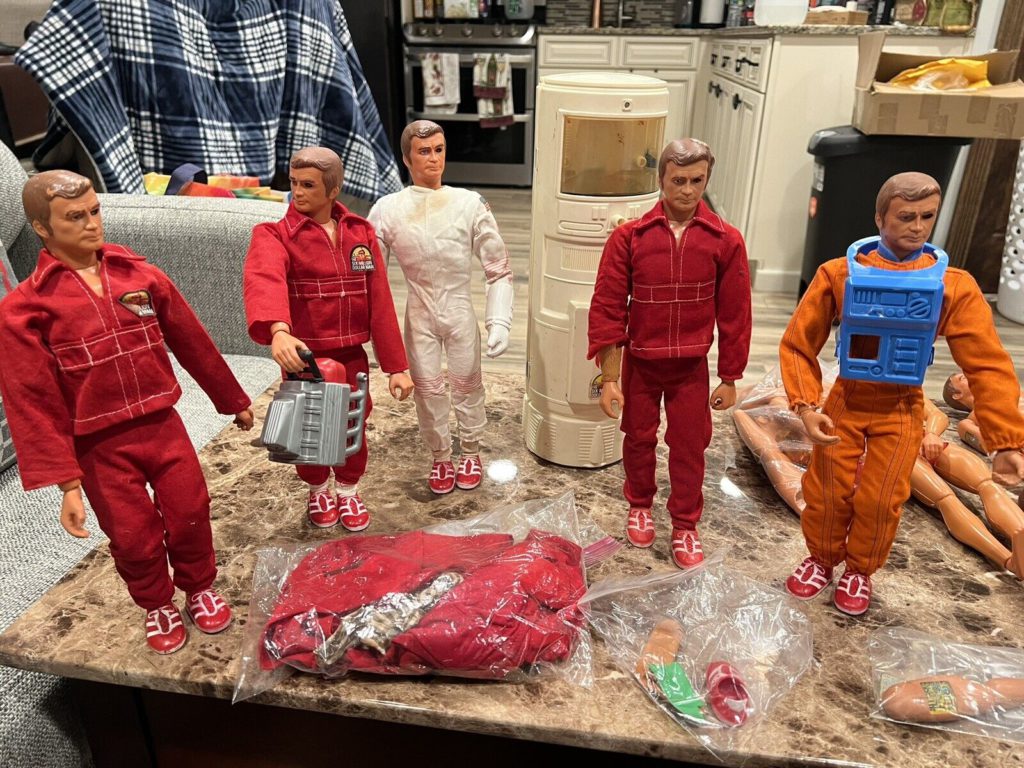
The Steve Austin figure Kenner launched in 1975 taught a masterclass in multimedia synergy before anyone used the term. Former managers explain how these toys pioneered what we take for granted – entertainment products developed across TV and toys together, each boosting the other’s profits.The rollable skin showing “bionic” parts revealed Kenner’s talent for creating illusions.
Like a top-tier TikTok effect, they created the feeling of tech through simple mechanical tricks – clicking arms convinced kids they had super strength. Marketing staff admit they priced it high to match the show’s concept. Strangely, collectors value figures with torn rubber “skin” because they look battle-damaged. Mint examples fetch $600-1,000, proving childhood memories remain the safest investment in today’s economy. Interested in how display technology has evolved from see-through robot domes to today’s screens? Explore the best computer monitors for the latest in tech features.
9. Billy Blastoff Space Scout
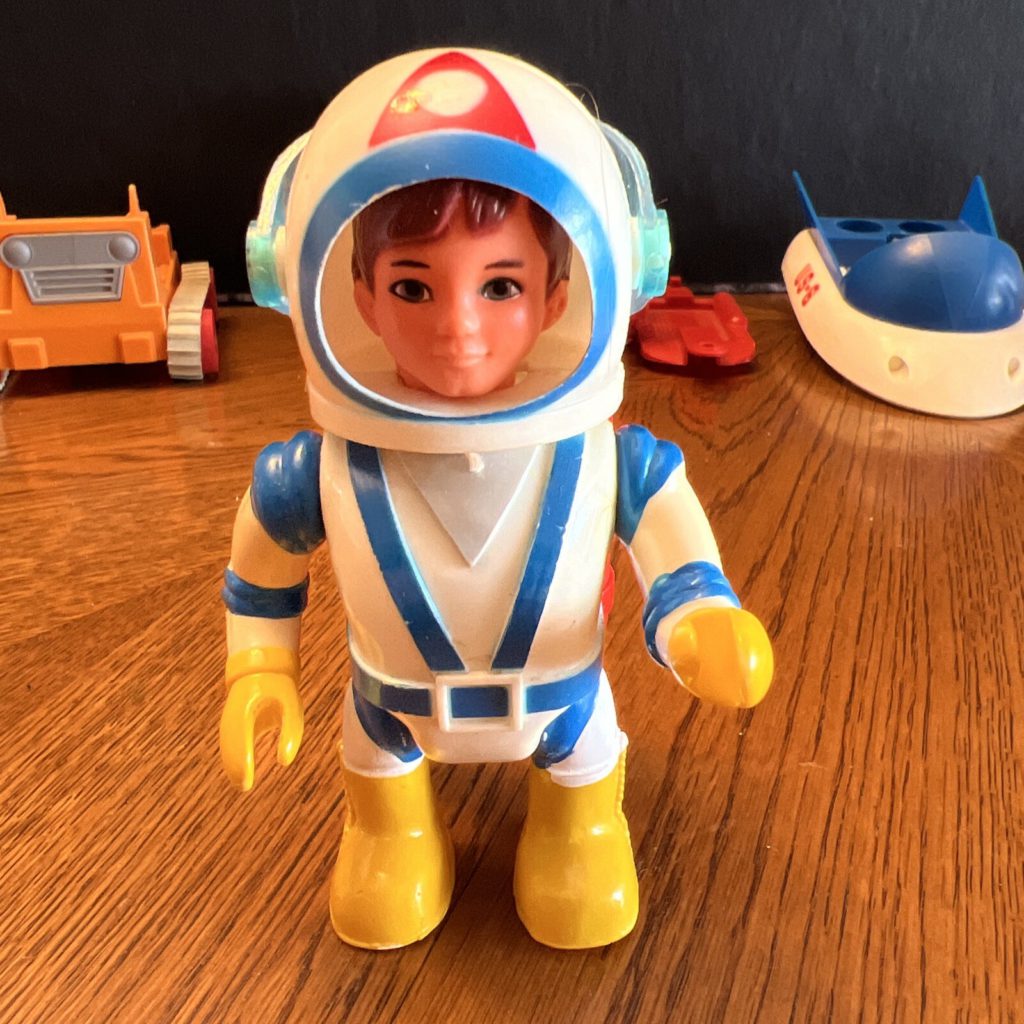
While leaders fought the Cold War with missiles, toy companies fought it with plastic space figures. Eldon Industries’ 1968 Billy Blastoff wasn’t just a toy but a miniature propaganda device ensuring children stayed excited about American space dominance. Former toy executives admit these space figures served two goals – fun and patriotic programming.
The 4-inch spaceman featured tech innovations mirroring NASA gear – suit attachments, pop-out rockets, and magnetic boots that taught science while creating fun. Research shows many Billy Blastoff fans later pursued aerospace jobs. The special joints that clicked into position showed real engineering skill. These space race relics now sell for $200-900 to collectors – many born after the Cold War ended, unknowingly preserving artifacts from an ideological battle they never experienced.
8. Mego Captain Kirk Action Figure

The 8-inch Kirk that rolled off Mego’s assembly line in 1974 wasn’t just another toy – it marked the first major corporate capture of imagination through TV. Before streaming wars, Mego created the screen-to-toy pipeline now worth billions. The gold uniform with peeling silver badge became the template for future merchandise empires.
This innocent-looking figure had calculated timing. Kirk arrived at a cultural turning point – as American space dominance faded and Soviet relations warmed. Ever had something from childhood suddenly worth more than your phone? That’s happening with these figures, with mint examples selling for $600+ to collectors chasing memories. The real value isn’t plastic but manufactured nostalgia – the perfect emotional hedge against inflation.
7. Mattel Strange Change Machine Creatures
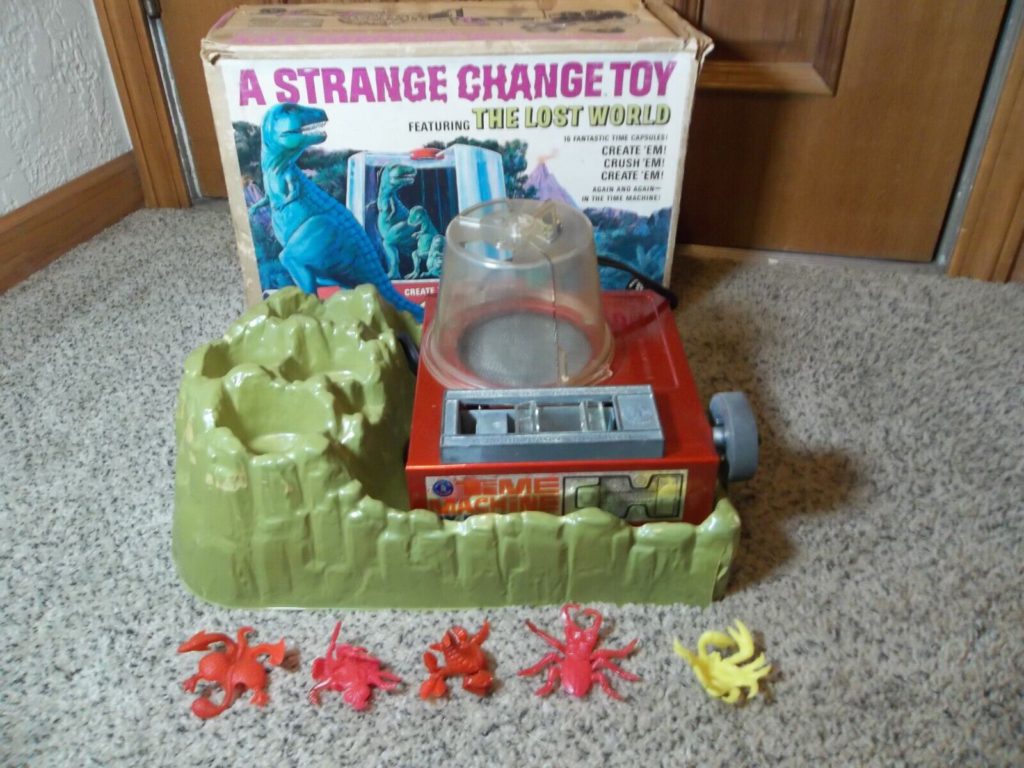
The Strange Change Machine Mattel released in 1967 stands as perhaps the biggest safety hazard ever marketed to children – a metal box with a heating element for kids to use with plastic. Internal papers show Mattel knew about potential dangers but calculated injury rates would stay below lawsuit-triggering levels. This pre-regulation relic transformed flat squares into monsters through controlled melting, something that would make today’s safety teams quit.
The science actually innovated, using heat-reactive plastics that “remembered” shape – like Instagram filters for physical objects. The machine buzzed while flat squares became detailed monsters. Former owners described minor burns as normal. The difficult transformation process created built-in dependency worthy of a subscription app. Modern parents view this toy like finding a rotary saw in the preschool section. Working examples cost $300-1,000+ to collectors who survived childhood with minor burns from this wild chemistry set.
6. Kenner Alien Figure

The 18-inch nightmare Kenner released in 1979 represents the worst marketing mistake in toy history – an R-rated horror monster sold to kids with predictable backlash. Internal documents show executives truly believed children would love the xenomorph. Stores refused it, parents complained, and unsold inventory piled up in warehouses.
This disaster shows how childhood standards changed over decades. Modern toy makers wouldn’t dream of selling kids a toy with a clear skull and spring-loaded killing jaw. The market rejection created an unexpected result – artificial scarcity through commercial failure. The jaw mechanism tells its own story, with fewer than 10% still working – they’re basically the Supreme drops of vintage toys. These commercial flops now sell for $1,000-10,000 – turning business failure into investment gold, like a failed school project now worth thousands.
5. Marx Big Lou Robot
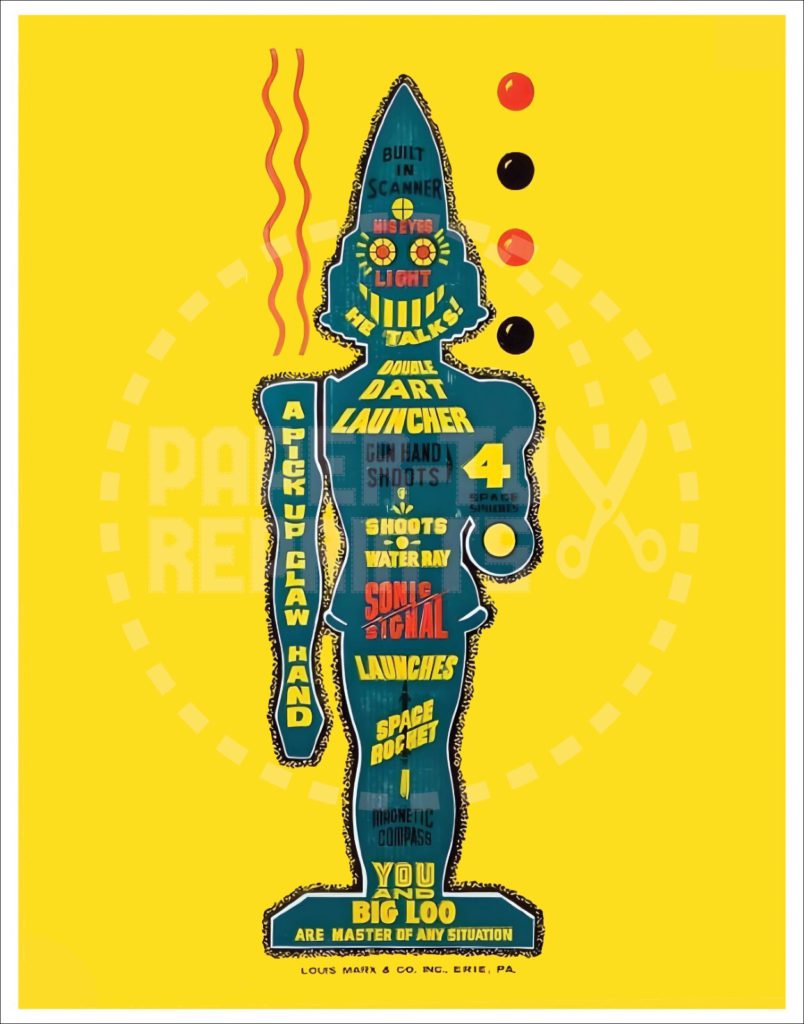
The two-foot robot Marx released in 1963 did something clever – it turned Cold War robot fears into friendly playroom companions just as automation threatened factory jobs. Company records prove Marx deliberately created a “friendly” robot to counter growing tech anxiety. Big Lou served as both toy and psychological tool – a PR campaign made of plastic.
Standing eye-level with many kids, this blue robot blended education with fun – light-up eyes, voice recordings, missile launchers, and a periscope. Research shows most saw the robot as a friend, not a threat – Marx’s social engineering worked. Kids often used it as a hockey goalie, showing how designed play patterns get hijacked by creativity. Today’s $400-3,000 price range reflects more than nostalgia – it shows what people will pay for tech innocence before AI became something to fear rather than befriend.
4. Major Matt Mason
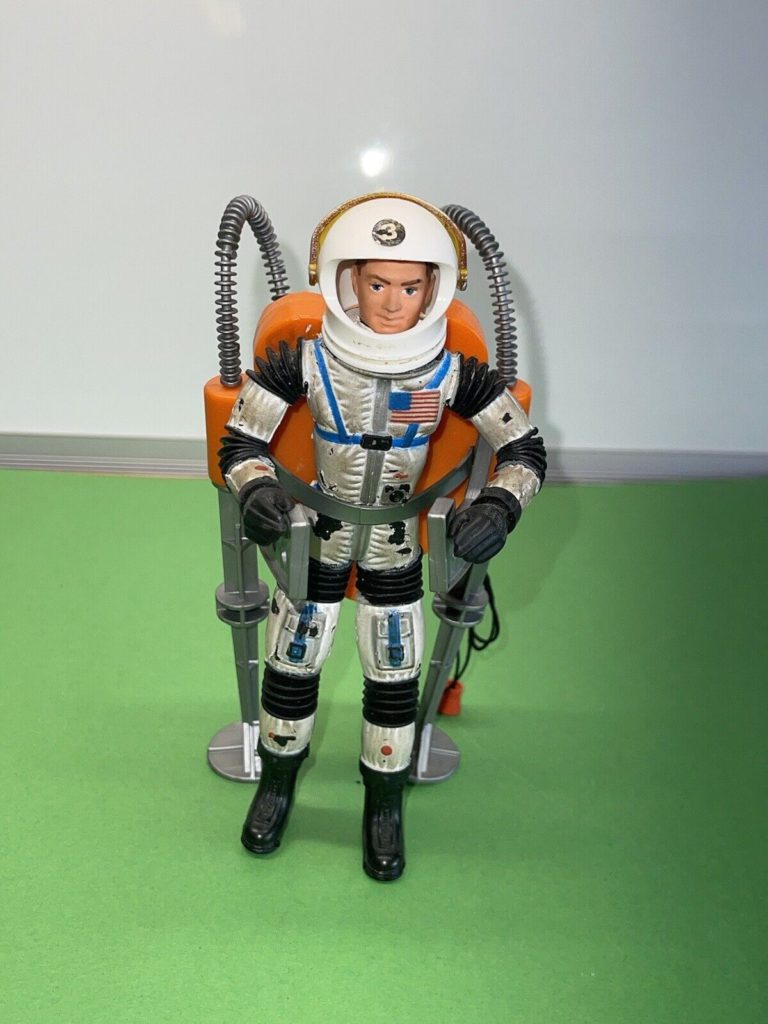
While NASA engineers worked on Moon missions, Mattel executives worked on how to profit from them. The 1966 Major Matt Mason figure captured America’s space obsession better than any government promotion campaign. This bendy astronaut didn’t just ride the space race wave – it helped children accept massive government spending that might otherwise face taxpayer pushback.
The design features impressed even adults – magnetic boots that stuck to fridges, glow-in-the-dark suits for nighttime play, and styling that captured space exploration excitement. Nobody mentioned the planned breakdown built into the rubber body. The material falls apart over decades, making perfect examples as rare as honest politicians. This “accidental” design flaw drives pristine examples to $1,000+ in today’s market, functioning like retirement accounts disguised as childhood memories.
3. Battlestar Galactica Figures
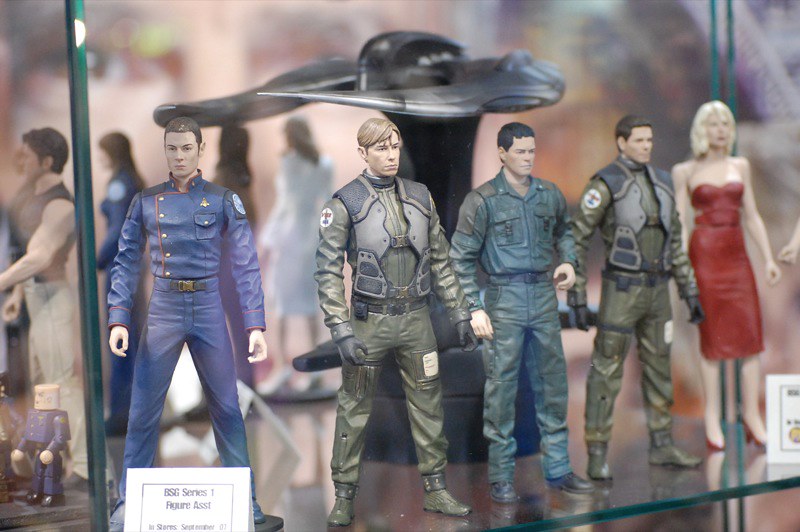
The shiny chrome Cylons that hit stores in 1978 tell a hidden story of corporate competition – TV networks desperately trying to fight Star Wars’ dominance. These reflective figures with moving red eyes weren’t just toys but weapons in a media turf war. They’re basically Vimeo trying to compete with YouTube – flashy, ambitious, but outmatched.Multiple sources verify these figures achieved engineering excellence – fabric capes when others used molded plastic, metallic finishes requiring extra manufacturing steps, and superior articulation.
The Starbuck figure captured actor Dirk Benedict’s likeness with amazing accuracy for 1970s technology. The market values these artifacts between $75-500 depending on condition – far less than Star Wars figures despite similar quality. That’s the economics of losing the pop culture war, something Netflix executives understand all too well.
2. Giant Godzilla
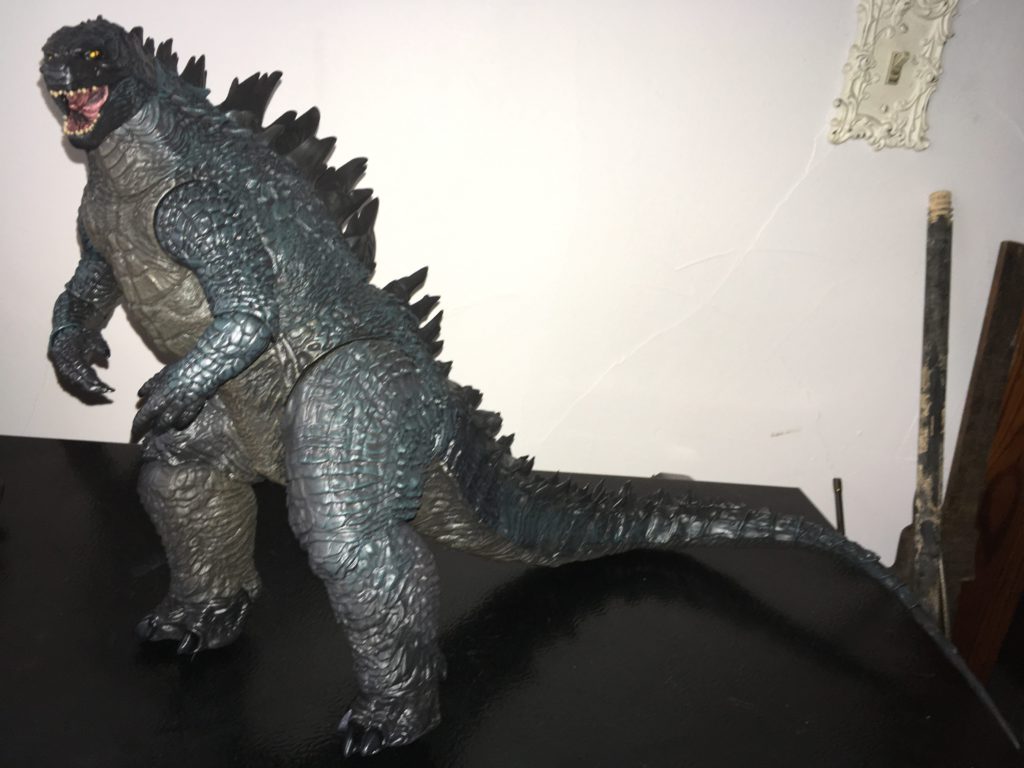
The 19-inch monster Mattel sold in 1977 wasn’t just a toy but a cultural bridge bringing Japanese monsters to American kids when “foreign” entertainment rarely crossed borders. Company records prove executives initially resisted the idea, certain American children would reject non-Western monster designs. Sales proved them wrong and predicted later Japanese imports from Nintendo to Pokémon.
The specs tell only part of the story – glowing eyes, flexible tail, roaring sounds – but miss how this figure smuggled Japanese nuclear anxiety symbols into American homes. Parents saw a plastic monster while unwittingly buying cultural exchange during Cold War tensions. The limited arm movement shows how foreign concepts often reach America partially translated. Collectors now pay between $400-2,500 for these cross-cultural artifacts, perhaps sensing they bought early globalization symbols – forerunners of today’s international entertainment landscape.
1. Marx Moon Space Station
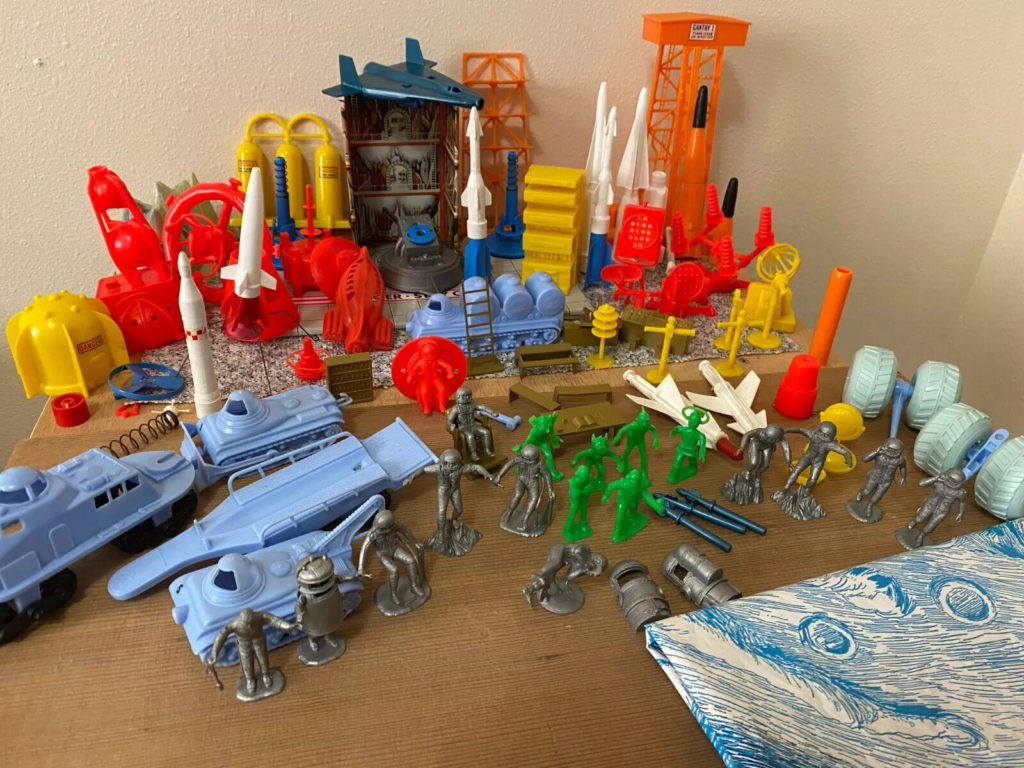
The massive lunar playset Marx produced before humans reached the Moon shows how companies shaped children’s space understanding before reality caught up. Interviews with former NASA staff reveal many first developed space interest through toys like this. This child-height structure presented a future that never happened – an aspirational vision of routine space living that NASA budget cuts never delivered.
The design features impressed – battery-powered elevators, clear transport tubes between levels, and multiple vehicle docking areas. Company documents show engineers consulted with aerospace contractors to include realistic future tech. It was basically a miniature SpaceX campus minus Elon Musk’s tweets. The rarity of complete sets (most missing delicate antennas) perfectly mirrors America’s abandoned space dreams – partially built, ultimately unfulfilled. Complete examples command $300-1,500, showing a more ambitious future that lived only in children’s rooms and corporate plans. If the thrill of the hunt for rare treasures excites you, our resource on vintage toy collecting can help guide newcomers and seasoned enthusiasts alike.


